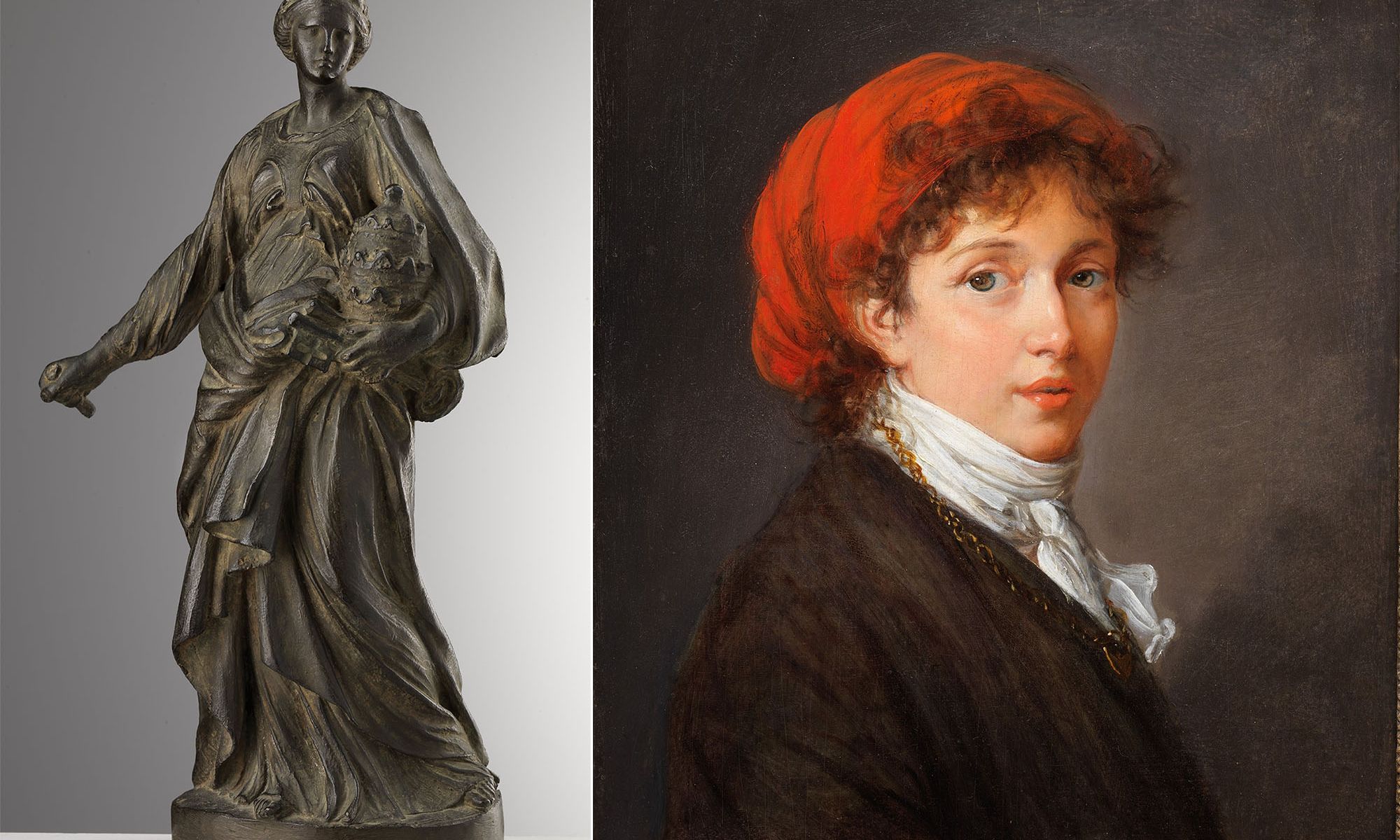Works gifted to the Clark Art Institute by the Aso O. Tavitian Foundation included (at left) Gian Lorenzo Bernini's bronze Countess Matilda of Canossa (1630s) and (at right) Elisabeth Louise Vigée Le Brun's Self Portrait in Studio Costume (around 1800) Both images courtesy the Clark Art Institute, Williamstown, Massachusetts
The Clark Art Institute in Williamstown, Massachusetts, has received an enormous gift of 331 works and more than $45m from the foundation of Aso O. Tavitian, a philanthropist and former trustee of the museum who died in 2020. The gifted works include significant pieces by a who’s-who of European artists spanning the 15th to the 19th centuries—among them Gian Lorenzo Bernini, Andrea della Robbia, Jan van Eyck, Elisabeth Vigée Le Brun, Parmigianino, Peter Paul Rubens and Jacques-Louis David. The money will allow the Clark to hire a new curator to oversee the collection and build a pavilion to house it, the Aso O. Tavitian Wing.
“During his lifetime, Aso Tavitian was a wonderful friend to the Clark and a generous supporter who provided us with exceptional leadership and dedication,” Olivier Meslay, the museum’s director, said in a statement. “We are deeply moved by his decision to place the heart of his collection in our trust and immensely grateful to the trustees of his foundation for their generosity in ensuring that we can fulfil his desire to share these treasures with the world.”
Works gifted to the Clark Art Institute by the Aso O. Tavitian Foundation include (at left) Peter Paul Rubens's Portrait of Young Man (around 1613-15) and (at right) Gil de Siloé's Saint Cecilia (around 1500) Both images courtesy the Clark Art Institute, Williamstown, Massachusetts
The collection of donated works is rich in portrait paintings and drawings, as well as sculpture, significantly bolstering the Clark’s collection in the latter medium. In total, the 331 works gifted include 132 paintings, 130 sculptures, 39 drawings and 30 decorative objects. Among the notable paintings in the gift are a Madonna of the Fountain (around 1440) by Van Eyck and his workshop, Vigée Le Brun’s Self-Portrait in Studio Costume (around 1800) and Rubens’s Portrait of a Young Man (1613-15). Notable sculptures in the gift include Bernini’s bronze Countess Matilda of Canossa (1630s), Della Robbia’s terracotta Portrait of a Youth (around 1470-80) and a marble Saint Cecile (around 1500) by the Spanish sculptor Gil de Siloé.
The Clark has selected the firm Selldorf Architects—which previously worked on renovations of two buildings on the museum’s campus, in 2014 and 2016—to design the Aso O. Tavitian Wing. It is expected to be completed in 2027 or 2028.
Works gifted to the Clark Art Institute by the Aso O. Tavitian Foundation included (at left) Madonna of the Fountain (around 1440) by Jan van Eyck and workshop and (at right) Parmigianino's Portrait of a Man (around 1530) Both images courtesy the Clark Art Institute, Williamstown, Massachusetts
Tavitian served on the museum’s board of trustees from 2006 to 2012, and loaned more than 30 works from his collection for the 2011 exhibition Eye to Eye: European Portraits, 1450–1850. He also served on the board of the Frick Collection and as a member of the Friends Group for the Department of European Paintings at the Metropolitan Museum of Art. Before his death, aged 80, Tavitian had begun discussions with the Clark about donating a significant portion of his collection to the museum. The rest of his holdings, more than 900 works in all, will be sold at Sotheby’s in February, according to The New York Times.
“My interest in the arts originally started from a decorative point of view related to the house I had bought in New York, but then I came to appreciate it and fell in love with it,” Tavitian told The Armenian Mirror-Spectator in 2017.
Tavitian, who made his fortune in the software industry, was born in Bulgaria. He was based between New York City and Stockbridge, Massachusetts, near the Clark. He was of Armenian descent, and his Aso O. Tavitian Foundation is partly devoted to supporting education and peace in Armenia and the Caucasus.

